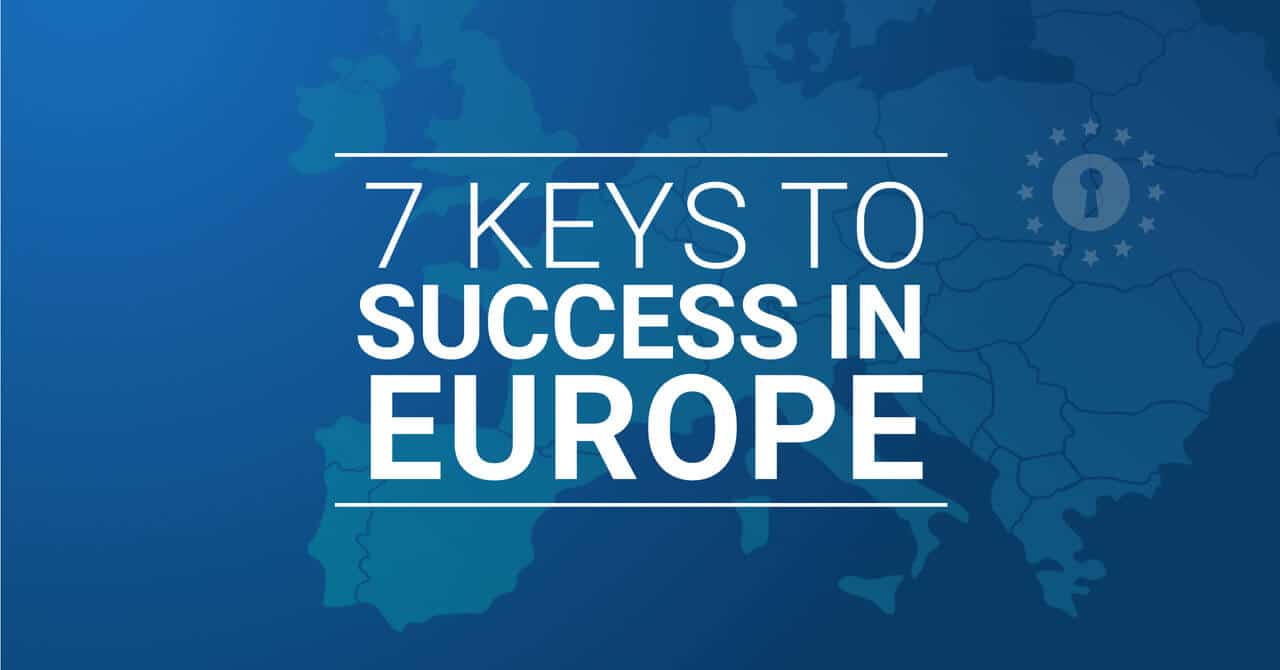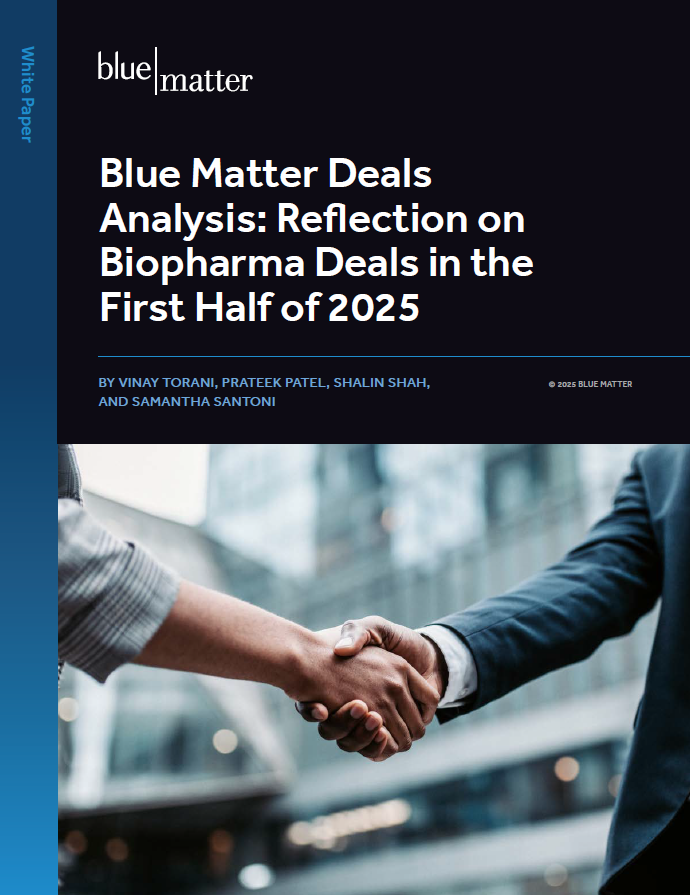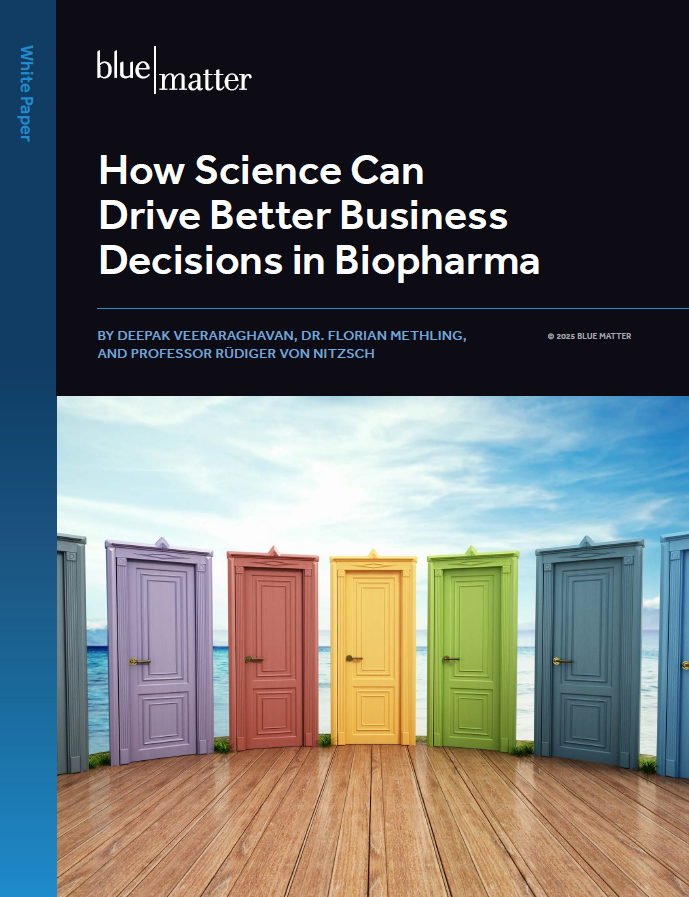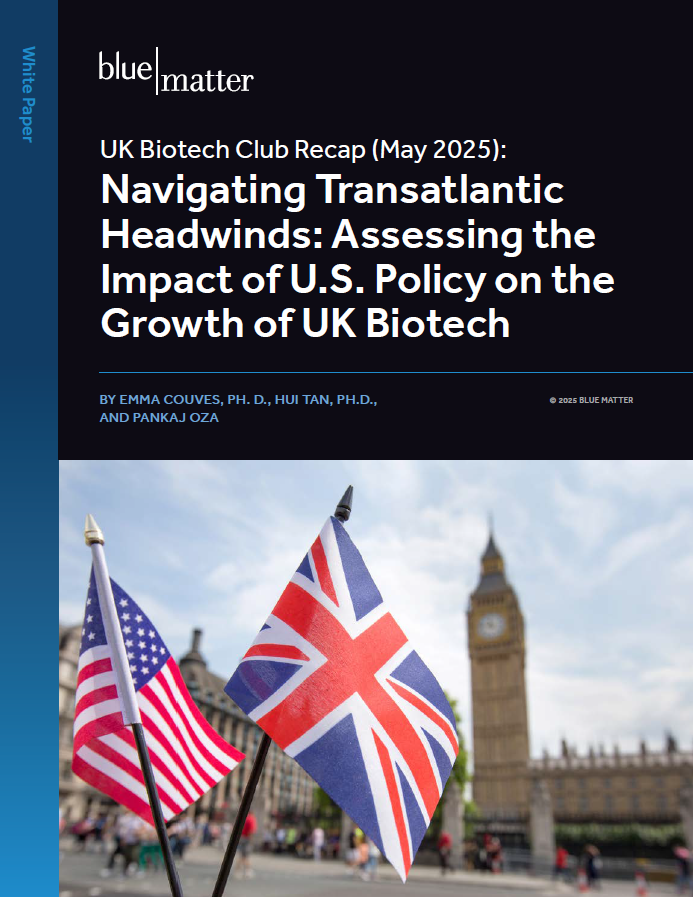
For US-based biopharmaceutical companies seeking to expand, establishing a presence in Europe is usually an obvious next step. Investors typically expect that a company will avail itself of such a large market opportunity and unlock the full commercial value of its assets.
Europe represents the second largest market in the world for prescription pharmaceuticals. The 28 member-nations of the European Union—plus important non-member states like Switzerland and Norway—represent more than 22% of the $800+ billion global pharmaceutical market. When focusing on new medicines only (launched 2012-2017), the European Federation of Pharmaceutical Industries and Associations (EFPIA) indicates that the top 5 European markets alone (Germany, France, Italy, Spain, and the United Kingdom) account for 18.1% of all global sales. Collectively speaking, European markets are highly attractive to any company with products that offer compelling and differentiated value propositions.
However, a move into Europe is a major step that should not be taken lightly. Companies that are ill-prepared—and that don’t understand the keys to success in Europe—can expend a tremendous amount of resources while negatively impacting the value of their assets for years to come. In short, when it comes to entering Europe, it really pays to do it right the first time.
Unfortunately, for companies that aren’t familiar with Europe, the best way to “do it right the first time” isn’t always clear. Even though most of Europe shares a common regulatory body, there are many differences to navigate. For example, the cultures and people are diverse, access and reimbursement schemes—and the related decision-making approaches—vary widely from market to market, and there are 24 “official and working” languages and 11 official currencies to deal with. It’s complicated.
Moreover, companies sometimes start to think about Europe too late. There are key things they must do very early to ensure IP protection, establish a team, set up their clinical trials for success, and lay the groundwork for market access. Starting these things too late can lead to risks and unnecessarily keep a company from achieving the full potential of its assets.
Therefore, the goal of this article is to start building a road map of sorts for companies that are interested in Europe. Here, we introduce seven keys to success in Europe and briefly describe why each is important. Companies should focus on these keys to success if they are considering European market entry, are in the process of entering, or if they’ve recently entered and are working to solidify their presence.
While we at Blue Matter have significant expertise in many of these areas, we have collaborated with external expert partners in many of the keys below to bring even more expertise. Over the coming months, we will publish subsequent articles and resources that will delve into each of these keys in far greater detail. Let’s get started!
Key 1 – File & Don’t Forget: Properly securing IP protection & completing regulatory filings
Securing European intellectual property (IP) protection and managing regulatory filings are critical, meticulous, and process driven exercises. Fortunately, the pathways, protocols, and timelines are well established. Still, both areas require special attention because they set the commercial playing field for years to come and directly impact a company’s ability to unlock its full commercial potential.
A company that conducts a full reconnaissance of the relevant IP and regulatory processes will gain a much better understanding of the mission critical interactions with authorities. Done right, these key interactions might enable the company to
- Expedite clinical development and review timelines
- Prolong exclusivity
- Optimize pricing
- More effectively pull through its strategic priorities
Mission critical interactions with regulators and payers should start while defining the pivotal trial strategy. Ideally, companies would seek joint scientific and health technological advice to ensure clinical endpoints will address unmet needs, differentiate from competitors, and enable access and reimbursement.
Keeping in mind the limited resources and time constraints, biotech startups should strive to align their FDA programs as much as possible to the EMA programs. In addition, they should conscientiously apply for orphan drug status, and/or any other regulatory options they may have.
Key 2 – Don’t Rely on the Science to Sell Itself: Leveraging the right commercial model to achieve market success
This key to success goes well beyond Europe, as it’s really a key to commercial success in general, regardless of the geographies involved. In short, even if the product in question is a true scientific breakthrough that’s highly differentiated from a clinical standpoint, the chances are that the science alone will not be enough to help it achieve its full potential.
It will need more than that to stand out. Companies need to effectively engage with stakeholders in the ecosystem to drive awareness, ensure a full understanding of how the drug and any related services or operational processes (e.g., logistics for cell therapies) work, understand needs, and overcome challenges (such as misdiagnosis leading to long delays in patient finding).
Successful companies in Europe will have a strategic (and systematic) approach for evaluating the market landscape(s), defining the overall vision, and determining what must be developed to meet stakeholder needs. Because resources are limited, they’ll also need to be smart about how they weigh alternatives and make trade-off decisions.
It is also important for companies to consider how to serve patients in markets where the opportunity isn’t as big. Going it alone across all of Europe is quite a big undertaking and risks diluting effort in core markets. Devising an effective strategy—such as finding a partner—to maximize value in these smaller markets is helpful to both patients and companies.
Key 3 – Location, Location, Location: Deciding where to set up a European HQ
Selecting the right location for a European headquarters is an important decision. However, a significant percentage of the time, companies select headquarters locations using very non-scientific approaches. Perhaps the CEO has an affinity for a certain city. Or, maybe the company just hired a European General Manager (GM) who happens to be from City X, so the office ends up there.
Selecting a location using such subjective approaches can result in costly mistakes. Instead, a company should devise a systematic approach for evaluating locations and making a final decision. There are a wide range of criteria that a company should score and evaluate, such as tax laws and benefits, labor laws, access to transportation, proximity to other life science firms, access to talent, quality of life, and a host of others.
There are too many examples of companies that based their decisions on subjective factors, then had to endure years of sub-optimal performance before finally admitting defeat and moving to a better location. An objective approach can help avoid those headaches.
Key 4 – Europe’s Got Talent: Determining which HQ & country roles are needed & when to hire them
Hiring the right leadership roles at the right times and in the right sequence is critically important. U.S. companies often underestimate the time and effort required to hire a team in Europe, and sometimes struggle to determine the best sequence for key roles, such as the GM and leaders for the Regulatory, Medical Affairs, Market Access, and Clinical Operations functions. Bad timing and improper sequencing can result in poor team dynamics, a lack of buy-in for the European strategy, and other challenges.
In addition, European hiring processes—as well as compensation and benefits expectations—are different from those in the U.S. Companies that fail to appreciate the differences can end up with significant and unexpected delays.
Another important dynamic, which relates to both talent acquisition as well as headquarters location, is whether to go after talent regardless of location. This would involve setting up a virtual leadership team rather than forcing talent to move to the same location. There are significant pros and cons for both options.
To succeed, companies need to focus a lot of attention on the critical GM role. They also need to decide whether to hire talent regardless of location vs. talent tied to a specific location, understand local benefits expectations, and plan the hiring sequence for their initial waves of hiring.
Key 5 – Go with the (Product) Flow: Establishing an efficient and effective supply chain
From a supply chain perspective, a company wants to be fully compliant and ready to receive purchase orders, deliver product safely and efficiently to customers, send invoices, and collect money as of Day One of market authorization approval. To achieve this for a European market entry, a company needs to understand the interlinks between the physical and product title flows and the financial flow. These parameters will enable the company to make strategic choices that allow them to optimize supply timelines and tax structures.
Moreover, it is vital to understand the use of the product, the patient, the prescription policies, the reimbursement flows, and the outlet (hospital, retail, homecare, etc.) to design the most optimal supply chain which fits the first launch, as well as possible subsequent launches of new indications or new products. In addition, labelling and packaging considerations accommodating the various languages need to be well thought through as well complying with the new serialization requirements in the EU.
Especially in the case of Advanced Therapy Medicinal Products (ATMP’s), an early start with experienced expert advice is highly recommended as the European supply chain infrastructure is still underdeveloped for these products.
As companies develop their supply chain strategies, they often underestimate the time required to get the necessary licenses. While VAT registration may be on a less critical time path, securing a manufacturing and import authorization and wholesale distribution authorization may take up to a year.
Third-party vendors can provide customer support, information technology, logistics, and finance solutions to help address some of the key issues for a European launch. Selecting the right partners that fit the culture and the supply chain strategies of the biopharma companies is a crucial decision. Therefore, biopharma companies need to obtain the best possible support and start engaging early to properly set up contracts and manage these relationships effectively.
Finally, it’s important to remember that data points gathered through the supply chain—coupled with competitive intelligence—can help foster commercial excellence and maximum transparency of where the goods are at any moment in time. Companies will need to be proactive in establishing effective mechanisms for capturing useful commercial data from the supply chain.
Key 6 – Show Me the Value: Effectively engaging with payers
Compared to the U.S., payers in Europe are more powerful relative to healthcare providers and patients. National payers are extremely important. In addition, their needs and expectations can vary widely, as different national payers use different criteria for evaluating medicines and making access and reimbursement decisions.
Because of this, companies planning to enter Europe must engage early with payers, preferably starting before they design their pivotal trials for Europe. “Baking” payers’ needs and evaluation criteria into trial design will help pave the way to more effective access and reimbursement, at least in priority markets.
Smart companies will proactively map the payer landscape, understand the evaluation criteria that key payers use, and engage early. This will result in more relevant data and provide insights for constructing more tailored and compelling value propositions for payers.
Key 7 – Europe is Not a Country: Defining the launch sequence & market-specific strategies
Each country represents a discreet launch into a differentiated healthcare decision-making ecosystem. Given the complexity, attempting to understand all markets or to apply a U.S.-like strategy is apt to result in failure. A regional strategy that reflects EU-specifics is a must.
Before entering any market, the pharmaceutical company needs to deeply understand the environment—patients, caregivers, physicians and other relevant stakeholders—to help develop brand propositions that will be meaningful to those stakeholder groups. These brand propositions often extend well beyond the product’s clinical attributes and involve a range of elements that can comprise the overall brand experience. These can include tools and support services, disease education, development of patient / support communities, and more. All of these things can help create a powerful and differentiating brand experience that goes beyond the product’s clinical attributes alone.
Furthermore, in Europe, opportunities to engage patients are different than they are in the U.S. An effective engagement strategy, applied consistently across the patient’s ecosystem, is essential to ensure value is delivered.
To enter Europe, smart companies will define their priority markets and determine the optimal launch sequence for entering them, taking into consideration things such as market size, reimbursement, reference pricing, and the delay between regulatory and reimbursement decisions.
In an ideal situation, the Global organization will lead co-creation of the pivotal study and market entry strategy for the priority markets. The requirements of those markets—especially for regulatory and market access—should be fed into the design of the pivotal study and development of engagement strategies.
In reality, companies aren’t always in the “ideal situation” and begin to focus on Europe after pivotal study design has already taken place. All is not lost in those cases, but it certainly does make for a more challenging dynamic.
Conclusion
Hopefully, this article has provided a brief but useful overview of seven keys to success when entering Europe. This list is not meant to be exhaustive, but instead to cover the keys that we have seen most closely correlate with positive outcomes for biopharma companies. Over the coming months, we’ll address each of these keys individually. We’ll go into more detail and outline approaches, tools, and processes that companies can use as they enter new European markets.
Blue Matter Expert Contributors:
- George Schmidt
- Theofanis Manolikas
- Tom Quirk
- Dirk Moritz
- Matt Durbin
- Nikos Kontos
Partner Expert Contributors:
- Michael Bentley – Experienced Human Resources executive
- Coos de Graaf – Experienced pharmaceutical executive
- Pim van der Aar – Managing Partner, AIM Connection
- Oliver Schlitz – Heidrick & Struggles, Partner – Global Healthcare & Life Sciences Practice







